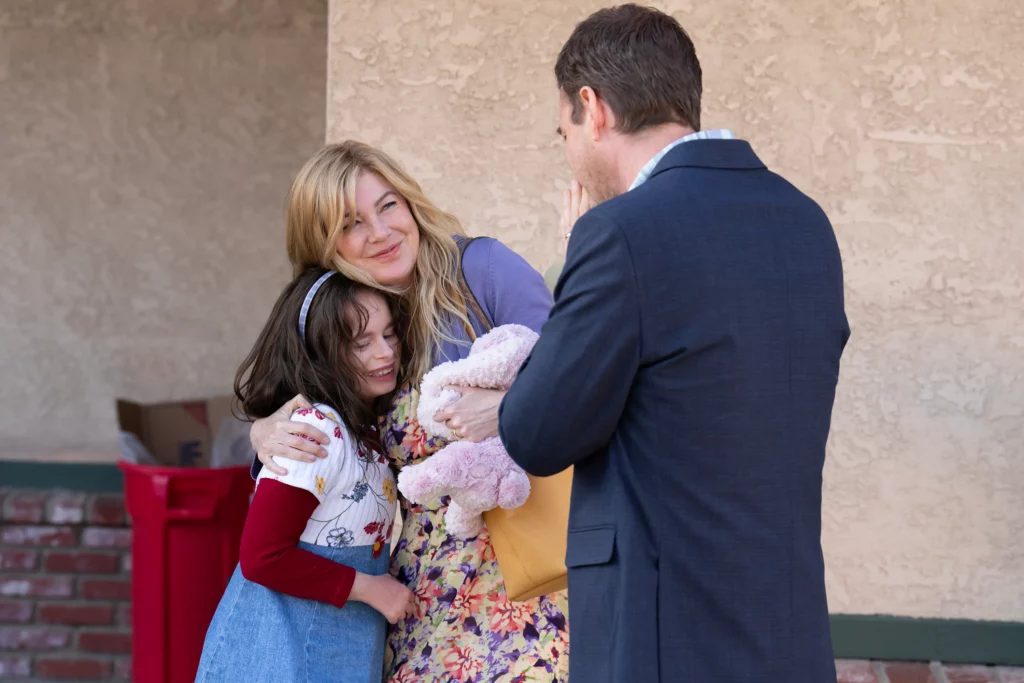Once upon a time, ‘prestige TV’ meant something. It meant complexity, sharp dialogue, moral ambiguity. Now? It means someone’s going to die – and they’ll probably be beautiful.
From glossy dramas to faux-intimate character studies, modern prestige television has quietly become obsessed with one thing: murder and violence. Not just as plot, but as purpose. The dead body is no longer the mystery; it’s the excuse.
Because somewhere between Big Little Lies and Baby Reindeer, TV figured out that trauma sells. Grief sells. And violence? Violence guarantees you’ll be taken seriously.
So what happens when death becomes the go-to ingredient for ‘depth’? Is prestige TV still innovating, or has it become a beautiful, brooding cliché?
Let’s dive in and find out.
You – a serial killer in love with his own inner monologue
You is prestige TV’s most shameless bait-and-switch. It dresses up like a psychological character study, whispers in voiceover like it’s profound, and then proceeds to stack a body count that would make Dexter blush.
But here’s the trick: The show isn’t really about violence – it’s about rationalizing violence. Joe Goldberg doesn’t kill out of rage or chaos. He kills out of ‘love,’ or ‘protection,’ or “you left me no choice,” and the show’s brilliance is in how it dares you to root for him anyway.
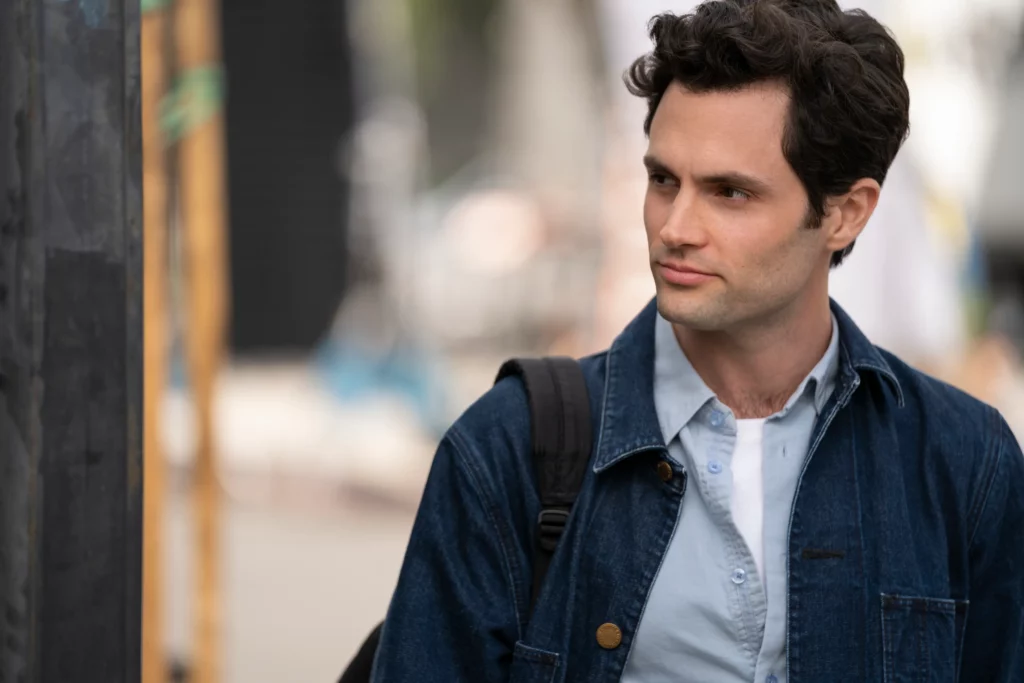
By the time we hit season 3, the series leans into its own absurdity. Joe is no longer a misunderstood romantic – he’s a well-dressed plague. Prestige TV loves characters with duality, but You goes further: it gives us a protagonist who narrates his own villainy like he’s journaling for therapy.
Is it prestige? Sometimes. Is it murder-driven chaos in a cashmere cardigan? Always.
Big Little Lies – murder as an afterthought, guilt as the main character
Big Little Lies starts with a body and ends with a secret, but the show never really cared about either. What it does care about is what that secret costs.
Here, murder isn’t mystery – it’s tension. The series stretches a single violent act into seven episodes of PTA meetings, wine nights, and escalating anxiety, until you realize that the real story isn’t who died, but what’s breaking beneath everyone’s curated lives.

It’s prestige TV in its most high-gloss form: designer sunglasses, abusive husbands, repressed memories, and a seaside color palette so beautiful it feels offensive. But it works. Because the murder is a narrative excuse to explore motherhood, female friendship, and how deeply society gaslights women into silence.
The twist? When the murder finally happens, it feels inevitable. Not shocking. Not mysterious. Just… the natural end point of everything no one wanted to say out loud.
True Detective (season 1) – violence as a philosophical state of mind
No one broods quite like Rust Cohle, and no murder quite broods like True Detective season 1. The dead girls, the antlers, the Southern Gothic horror – it’s all there. But beneath the crime scene aesthetics is something quieter and more unsettling: an obsession with meaninglessness.
True Detective doesn’t just use murder as a plot, it treats it as proof; proof that the world is broken. That evil festers in institutions. That time is a flat circle and we’re all just waiting to be crushed by our own insignificance.

This is prestige violence with a mushy heart. It mixes HBO gloss with Lovecraftian dread, while McConaughey chain-smokes his way through some of the bleakest monologues ever written for a crime show. It’s slow, cryptic, occasionally self-indulgent, and completely magnetic.
In the end, the killer is less important than the existential weight the characters drag around like a second skin. Which is, somehow, more haunting than any twist.
Baby Reindeer – when the violence is complicated and abstract, but still lingers in every frame
Baby Reindeer proves that you don’t need a corpse to create horror – just obsession, shame, and a slow, skin-peeling sense of dread.
There’s no clean crime scene, no masked killer, no sudden twist. And yet, the show feels more emotionally violent than most murder mysteries. Why? Because the damage here is internal. Psychological. And arguably harder to survive.

In a post-White Lotus, post-Fleabag era of TV, Baby Reindeer arrives with a brutal kind of honesty. It’s messy and quiet and raw, blurring the line between victim and enabler, survival and performance.
The viewer becomes complicit, uncomfortable, and at times unsure what’s real – which is exactly the point.
Prestige TV usually builds toward a death. This one builds toward a breakdown. And by the time it ends, you realize it was never about justice or resolution; it was about the cost of telling the story at all.
The White Lotus – violence as vibe, metaphor, and mood lighting
In The White Lotus, violence doesn’t explode – it simmers. It lingers in half-smiles, backhanded compliments, and dinner conversations that feel like psychological warfare. Sure, someone dies in every season. But the real brutality? That’s in the marriage bed. The spa. The cabana.
What makes White Lotus so devastating is how it wraps class tension, repressed rage, and quiet humiliation in luxury linen and Aperol spritzes. The characters aren’t chasing truth or closure; they’re chasing comfort, control, and distraction from the inevitable rot.

Violence here is less about physical force and more about emotional erosion. Tanya’s death in Season 2 isn’t even the most painful moment – it’s Harper and Ethan’s slow moral decay, it’s the transactional sex, the ego wars; the way people weaponize politeness.
In a show where nothing is really okay and everyone’s pretending it is, violence becomes… tasteful. Curated. Symbolic. And that makes it all the more disturbing.
Monsters: The Lyle and Erik Menendez Story – when true crime stops asking “who did it” and starts asking “why?”
There’s no mystery to the Menendez case. We know who pulled the trigger. What’s murkier – what still divides people decades later – is whether it was cold-blooded murder or a warped act of survival.
This is where true crime edges into prestige territory: when it stops being about the crime itself and starts dissecting trauma, family mythology, and the long shadow of abuse. The Menendez story is brutal, yes, but also theatrical in a sense. It’s about image, legacy, the American dream turned grotesque.
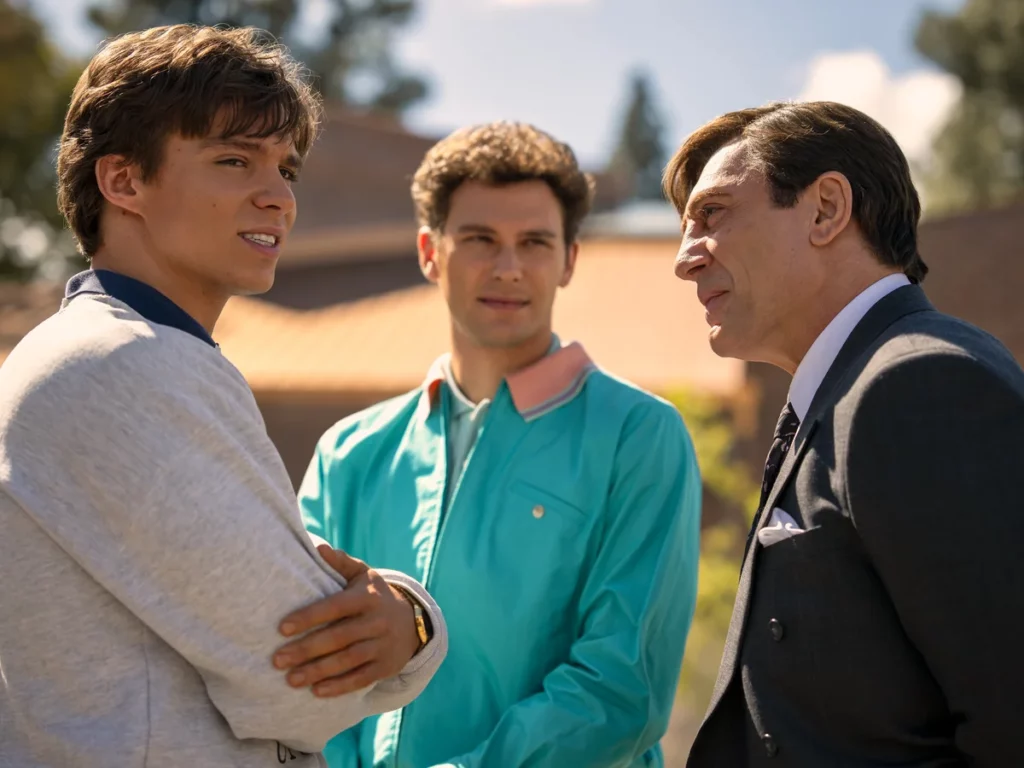
Prestige violence thrives on moral gray zones, and the Menendez brothers live in that space. Two well-dressed teenagers, a Beverly Hills mansion, and a courtroom circus – it’s a tragedy wrapped in wealth, masculinity, and generational silence.
And now, in the age of TikTok trials and victim-centered reappraisals, their story hits differently. It forces viewers to question who gets to tell their side, and whether justice ever really fits the frame.
Good American Family – when violence means manipulation, myth-making, and the need to be believed
There’s no traditional murder mystery in Good American Family, but it’s one of the most disturbing stories on television. It dramatizes the real-life case of Natalia Grace, the Ukrainian adoptee at the center of a media frenzy, parental accusations, and questions of age, identity, and innocence.
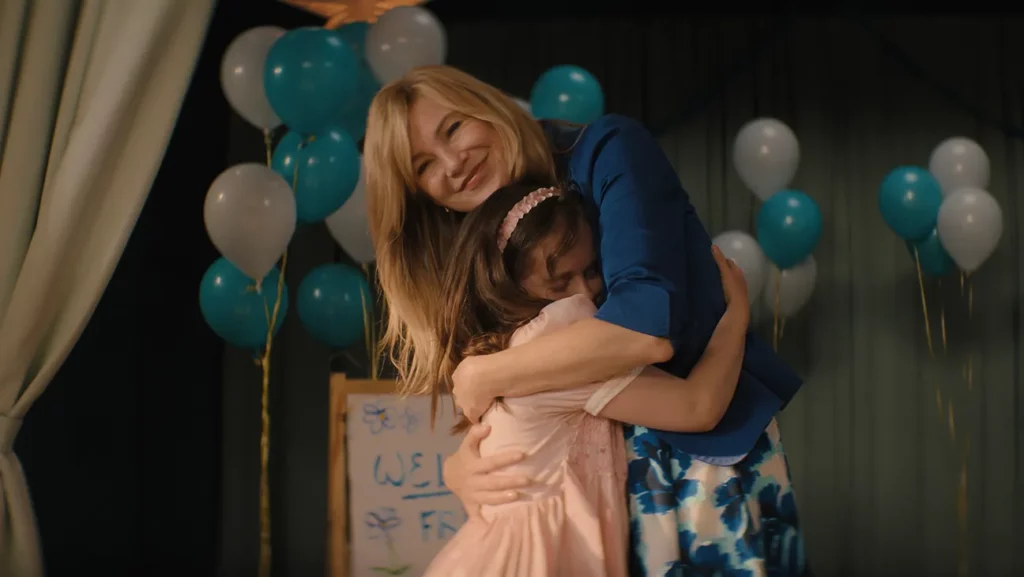
The violence here is legal, psychological, and reputational. What starts as a seemingly heartwarming tale of adoption spirals into a dark web of manipulation, delusion, and narrative warfare. Every character weaponizes their version of the ‘truth.’ Every scene feels like it’s gaslighting the audience on purpose.
And that’s the prestige trick: The show doesn’t want you to know who’s right. It wants you to sit in the discomfort of ambiguity. In a world obsessed with clean answers and courtroom climaxes, Good American Family shows us a quieter, more insidious form of harm – one rooted in the human need to feel morally justified.
When prestige doesn’t need a body count: The Sopranos and Six Feet Under
The Sopranos was about murder – but not centered on it. Yes, people die. Yes, there’s violence; how could there not be when it’s a TV show about mobsters? But the real draw is the psychology. Tony’s panic attacks, the therapy sessions, the moral exhaustion of maintaining two lives. It’s a show about death in the most literal sense, but the prestige comes from how it explores existential dread, masculinity, and decay.
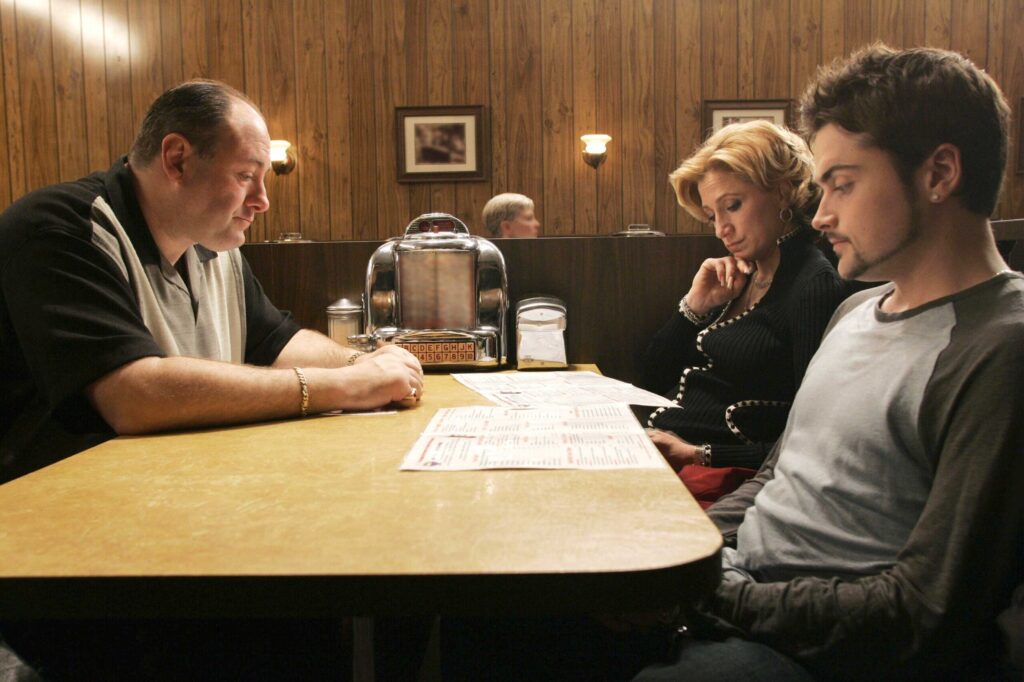
Six Feet Under, meanwhile, begins every episode with a death – but turns it into something meditative, even sacred. It’s not about violence, even though some deaths were definitely involved with a lot of it. It’s about meaning, about grief. About how death touches every mundane corner of life – sex, parenting, dinner, silence.
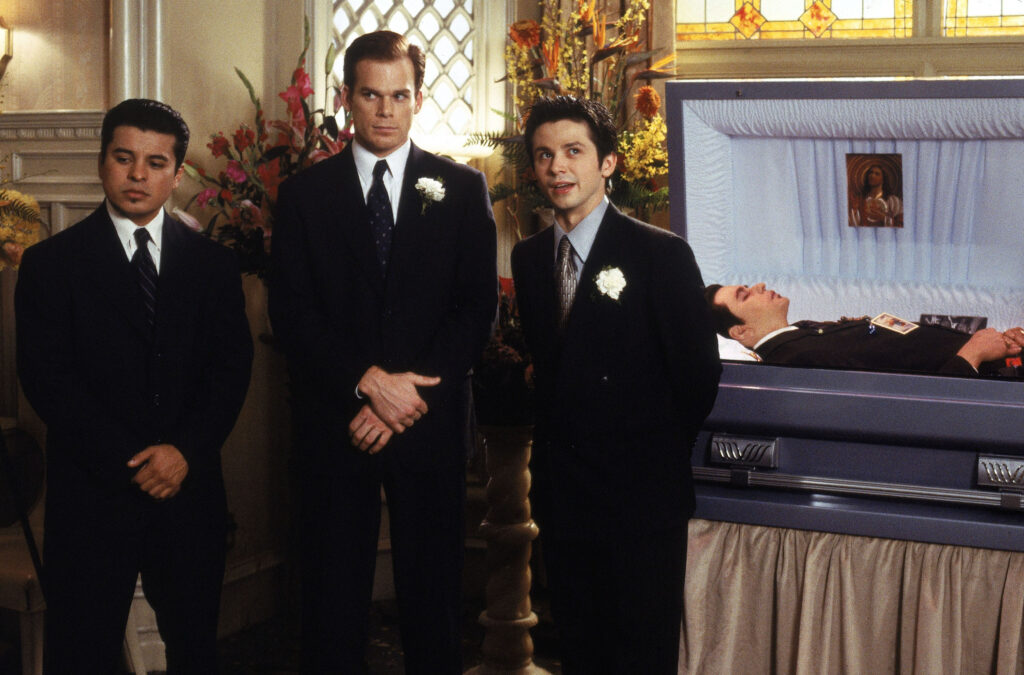
Both shows are masterclasses in restraint. They don’t throw a dead body at you to prove they’re ‘serious.’ They earn their prestige with intimacy, character work, and a refusal to give easy answers. In a world of spectacle and shock, these shows made you sit with stillness – and that, ironically, made them more powerful than most stories drenched in blood.
Final thoughts – when prestige TV equates violence with depth
In the evolving landscape of prestige television, violence has become a pervasive narrative device. It’s not merely about the physical acts but the psychological, emotional, and societal undercurrents that these stories explore. From the unsettling dynamics in Good American Family to the existential musings in True Detective, these series delve into the human psyche, unraveling the complexities of identity, morality, and truth.
However, this reliance on violence as a storytelling mechanism raises questions about the industry’s creative direction as a whole. Is the portrayal of trauma and conflict a means to provoke thought and empathy, or has it become a formulaic approach to captivate audiences? While these narratives offer profound insights, there’s a fine line between meaningful exploration and sensationalism.
As viewers, it’s essential to engage with these stories critically, recognizing the artistry involved while also questioning the narratives presented. Prestige TV has the power to illuminate the human condition, but it must strive to do so with authenticity and purpose, rather than defaulting to violence as a shortcut to depth.


